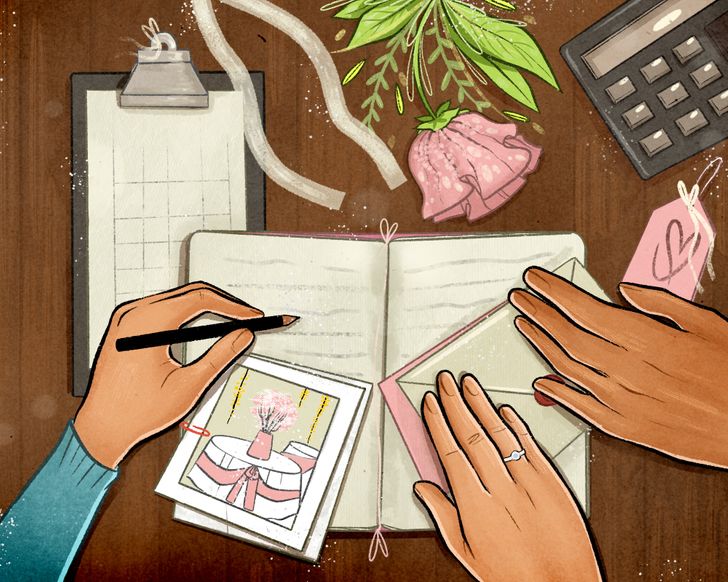
How to Seat Guests at a Wedding Reception

Having a wedding seating chart ready keeps your guests and you feeling comfortable and at ease, and it also helps keep the new introductions smoother. Guests like being told where to sit, and it makes things convenient for your caterer too, to make sure every table is filled to its max capacity.
5-Minute Crafts will cover these issues in the article below, starting from which table shape to pick to organizing the best wedding reception ever.
1. Have a floor plan ready.

After choosing a wedding venue, ask them about the full layout of the space, one that lets you see space dimensions, bathrooms, and electric outlet locations.
2. Choose a table shape.

There are 4 table shapes to choose from rectangle, square, circle, and oval. Every shape has its own benefits. For instance, rectangular tables can seat more guests in the space, and it lets the guests chat easier with other guests across from them. Circular tables are a traditional choice and give the guests more legroom.
3. Plan the seating arrangement for the couple.

No matter which table the bride and groom are seated at, the bride is traditionally seated to the groom’s left. There are 3 ways you can arrange the seating for the newlyweds:
- Sweetheart table: Includes only the bride and groom.
- Head table: Includes the newlyweds in the center, bridesmaids on the left, groomsmen on the right. The plus ones of the bridesmaids and the groomsmen are seated with the rest of the guests.
- King table: Includes the newlyweds in the center, their parents, bridesmaids, groomsmen, and their plus-ones, if any.
- If you choose the sweetheart table, consider seating parents and grandparents together or with a close set of friends and relatives. If the parents are divorced, then each parent can host their own separate table.
4. Organize other guests by groups.

Once the guest list is ready, it’s time to group them on the basis of how they know the couple. Consider family guests, schoolmates, college friends, co-workers, etc. All you have to do is arrange their seating based on who already knows each other and who is on good terms with who.
Apart from this, you can also consider seating them according to their age, interests, and backgrounds. The gist is to make everyone feel comfortable. Make sure to not play matchmaker and to not seat people together who don’t see eye to eye.
- When it comes to seating your extended family or parents’ friends, make sure to ask for your parents’ advice.
5. Consider having a kids’ table too.

If there are a lot of kids at your wedding, then organize a separate table for them. Try not to seat them too far away from their parents’ seats. At this table, you can also have exciting activities or crafts to keep them busy. If the children at the reception are only the flower girl and the ring bearer, then consider seating them with their parents.
6. Give VIPs special treatment.

If someone in your family has a sweet tooth, consider seating them near the dessert counter. Assign the second-best seats for your parents and guardians. Make them feel that they’re a huge part of your wedding too.
It’s advisable to keep the elderly away from the band, DJ, and speakers, because the loud noise can make them uncomfortable. Guests in wheelchairs can be seated either at one of the edges of the room or close to the dance floor. This way, they’ll have a lot of space to move around.
7. Create a digital or physical seating chart.

Many wedding websites can help you design a seating chart online. They also have drag and drop features, customizable templates for multiple table options, and a lot more to make it easy to arrange everything according to your preferences.
Or you can make a tangible one with the help of poster boards on which you can put up the guests’ names on Post-Its in different seating arrangements. You can also use a big whiteboard, and dry erase markers if you wish to save paper. If you want to get creative with the guest seating charts, wedding websites have a lot of inspiration to offer.
8. Invest in table cards.

You can also use place cards and escort cards to make the seating arrangement go smoother on your wedding day. Escort cards mention the guests’ names and the table assignments, whereas place cards are placed on the guests’ table to indicate where they should sit.